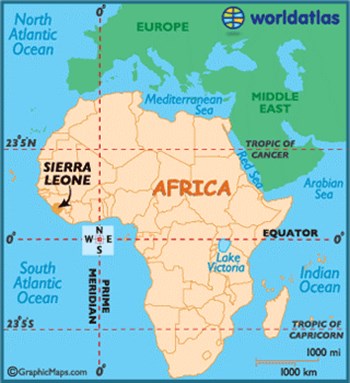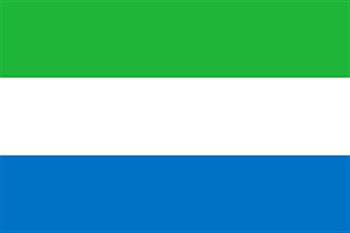Translation and Localization for Africa: Sierra Leone
Sierra Leone, officially known as the Republic of Sierra Leone, is a country famous for diamond reserves in the western coast of Africa. It has borders with Guinea to the north, Liberia to the southeast, and the Atlantic Ocean to the southwest.
Sierra Leone was dominated by the coastal tribes for long decades, and its location was occupied for more than 2500 years.

Sierra Leone Demographics
- The population is six million.
- The capital is Freetown, with just over one million people.
- Sierra Leone got its independence from the UK on April 27th, 1961.
- It is a Presidential Republic.
- The current President is Ernest Bai Koroma (since September 17th, 2007).
Languages of Sierra Leone
- English is the official spoken language at schools and government offices.
- Krio as the most widely spoken language across the country and is spoken by 97% of the population.
- The language of Krio unites all the different ethnic groups in Sierra Leone which exceed 16 groups, particularly in their trade and interaction with each other.

Sierra Leone Culture
- In 1787, the British philanthropists founded “Province of Freedom” which later became Freetown, and was the principal base for the repression of the slave trade.
- The word Sierra means “a mountain chain” and Leon means “lion.”
- The national symbol for the country is the lion, and the national colors are green, white, and blue.
- There are 18 ethnic groups: the Temne in the north and the Mende in the South are the largest.
Sierra Leone Consumers
The economic development of Sierra Leone has been hindered by a great dependence on the mineral exploitation. The government and the people rely on gold and diamonds to generate foreign investments. The economy could be described as “exploitative” and depends upon the extraction of unsustainable resources.
Roughly two-thirds of Sierra Leone’s population work in agriculture, and agriculture accounts for approximately 58% of national GDP.
Since 1930, when diamonds were discovered in Sierra Leone, there have been many resources devoted to searching for diamonds, but the weakness of its central authority due to political crises has led to passing this wealth to the hands of rebels.
Future & Conclusion
The economic and political institutions in Sierra Leone are fragile and present little optimism for long-term economic development. Recent reforms have been targeted to international trade and strong enforcement of contracts. The country continues to tackle the daunting challenge of strengthening integrity in the management of its natural resources, mainly diamonds, due to the fact that Sierra Leone is one of the top ten nations producing diamonds.
Sources:
https://en.wikipedia.org/wiki/Sierra_Leone
https://www.cia.gov/library/publications/the-world-factbook/geos/sl.html
